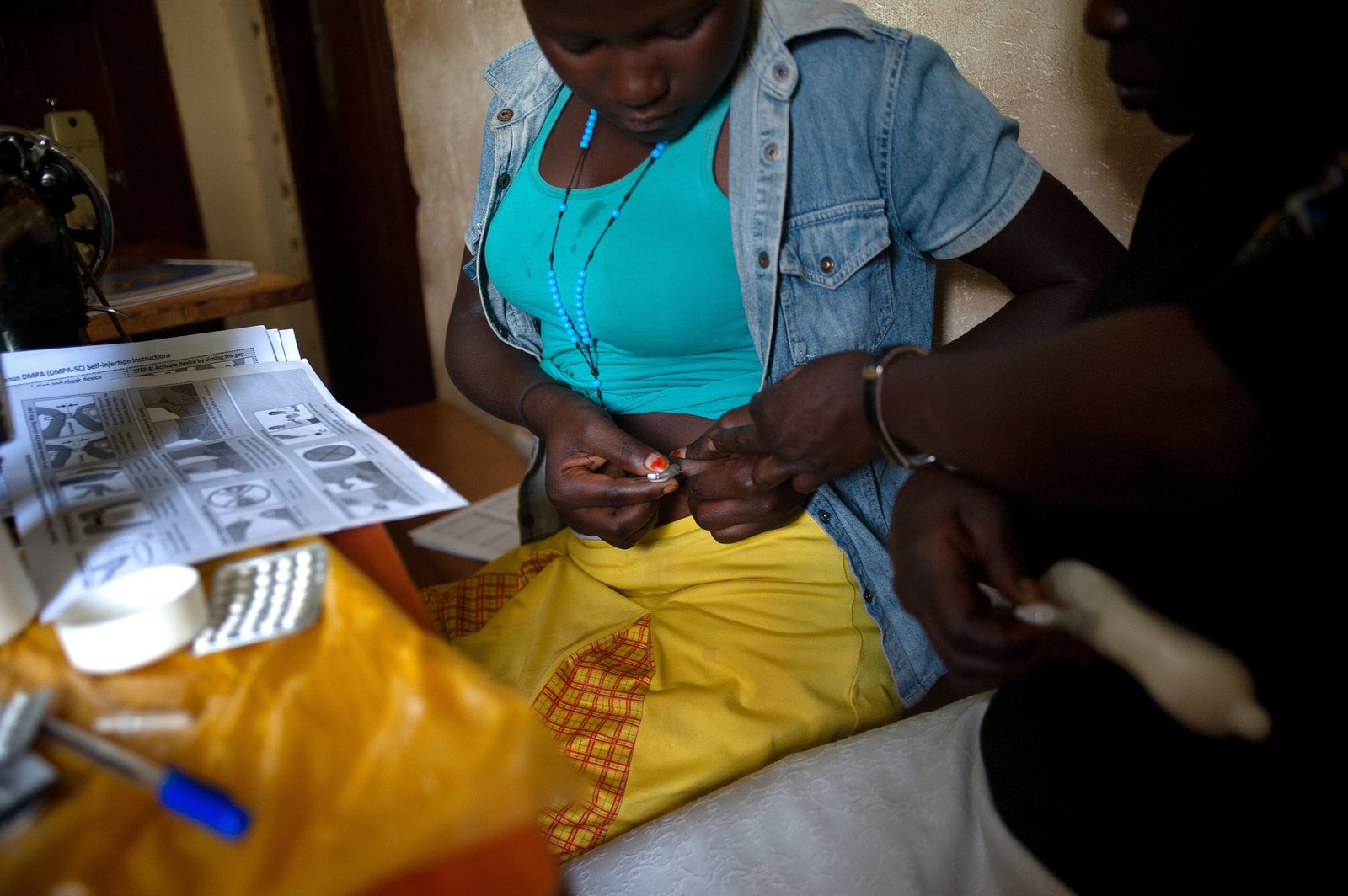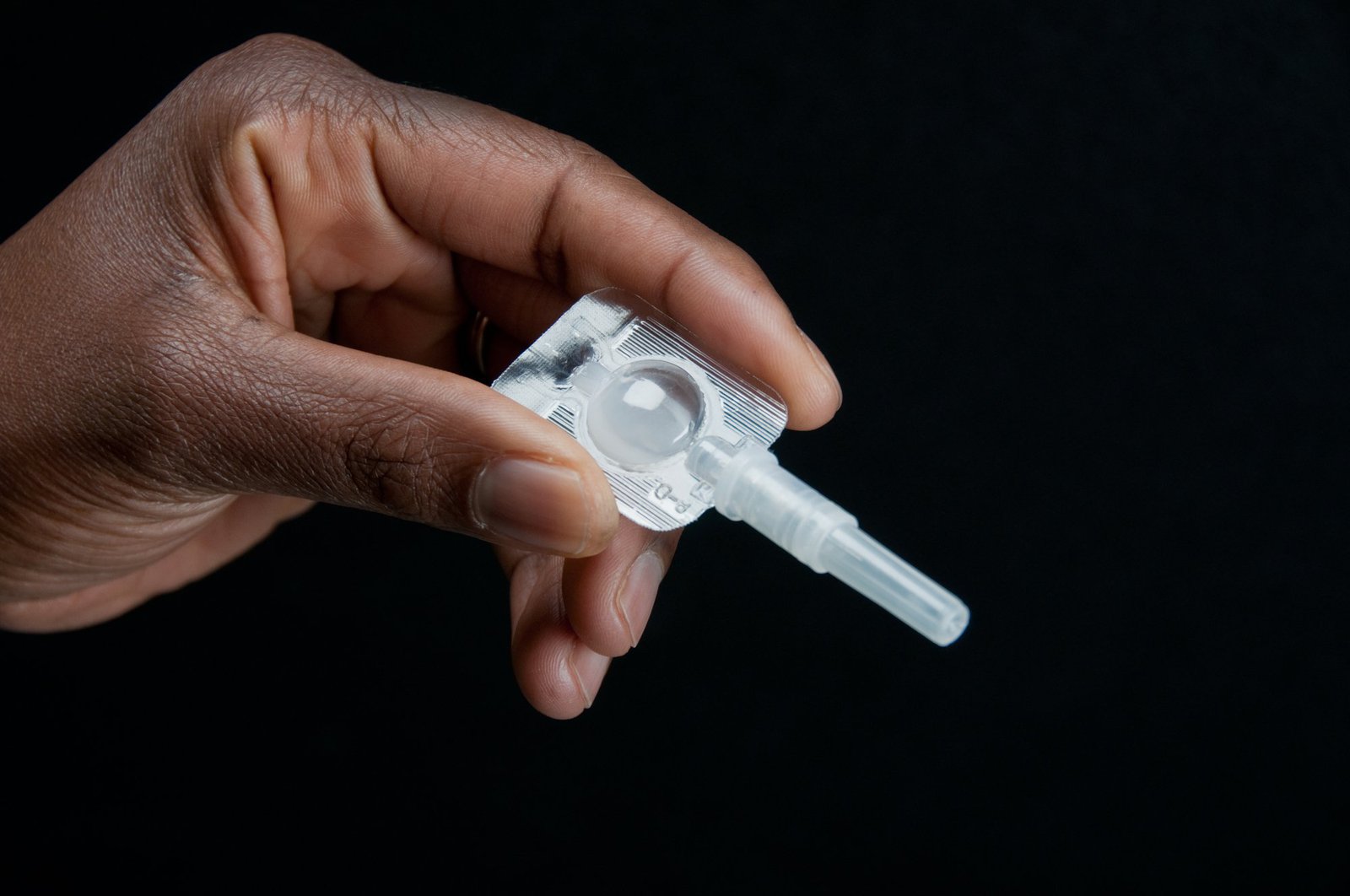Designing best practices for contraceptive self-injection
According to Family Planning 2030, just 30 percent of women in Uganda use modern contraception. Accessing limited and hard-to-reach family planning services makes it challenging for women to space births and avoid unintended pregnancies.
Program Design & Development
Program Prototype Evaluation & Assessment
Program Implementation
Post-Implementation Measurement, Evaluation & Learning
Policy advocacy

The challenge
People-centered care means shifting care to the community, and even bringing it directly to individuals when possible. And subcutaneous DMPA (DMPA-SC)* can put reproductive health care directly in the hands of women and adolescent girls. For more than two decades, PATH has championed the development and delivery of this all-in-one contraceptive in the BD Uniject™ injection system (a device originally developed by PATH). A single injection—which can be administered by women themselves—prevents pregnancy for three months.
Research by PATH and partners has shown that women can self-administer DMPA-SC safely and effectively, that they like doing so, and that self-injection enables them to continue using the method longer than injections from providers. But how do women best learn to self-inject outside of research studies, in routine primary health care settings?
The approach
Taking a human-centered design approach to identify best practices and user needs, as well as health system realities, PATH researchers began by reviewing the previous studies to design “best guess” models, and then created journey maps to highlight client and provider perspectives through every step of the program. This included the incorporation of tools and approaches we had developed in previous research, such as a two-page visual self-injection job aid that was created through a human-centered design process with clients in Senegal and Uganda.
With this framework in place, we facilitated workshops and interviews to solicit input from stakeholder groups: clients, facility-based providers, community health workers, district and Ministry of Health leadership, and implementing partners. After incorporating their feedback, we launched a three-month “rapid pilot” at four clinics. Intensive monitoring and interviews enabled us to test and refine our approach.
After the rapid pilots, self-injection was offered in four districts in Uganda across delivery channels: public-sector facilities, community-based distribution, and “safe spaces”—public areas such as schools and community centers where girls and young women can meet with female mentors and providers to receive HIV prevention and other health interventions and services.
The solution
Uganda paved the way, becoming the first country in sub-Saharan Africa to offer contraceptive self-injection outside of a research setting. This initiative yielded rich insights that are now being rolled into the national scale-up of self-injection in Uganda and many other countries.
Human-centered design principles were used to:
- Understand local context.
- Amplify the voice of users.
- Engage users early in the innovation process.
- Evaluate solutions in real-world settings.
- Design solutions for integration into existing systems.
- Ensure local ownership.
- Accelerate policy change.
“After I had reinjected, I went about my work. Not like walking from the facility—you get the injection and then walk a long distance. It is difficult, the journey to walk every three months.”— DMPA-SC self-injection client, Uganda

By putting the power of protection directly in people's hands, contraceptive self-injection has the potential to reduce access barriers, increase contraceptive continuation rates, and enhance autonomy. Photo: PATH/Patrick McKern
The impact of using human-centered design
Our engagement has yielded rich insights into self-injection that are making an impact in Uganda and beyond. A deep understanding of user needs and health system realities has created better solutions that, in turn, deliver better outcomes.
The program designs we developed and lessons learned through the Self-Injection Best Practices project and other studies are being implemented as Uganda scales up self-injection across the country. And through the DMPA-SC Access Collaborative, led by PATH in partnership with John Snow, Inc., we share tools and resources and provide technical assistance for countries scaling up DMPA-SC and self-injection. More than 50 countries are now introducing DMPA-SC through provider administration, and more than 30 of these countries are also beginning to offer client self-injection as part of their family planning method mix.
*DMPA-SC: Subcutaneous depot medroxyprogesterone acetate.
Uniject is a trademark of BD.
“I am in charge now. I inject myself from home, in the bathroom, or anywhere. If I ever have another child, it will be because I want one.”— DMPA-SC self-injection client, Uganda


